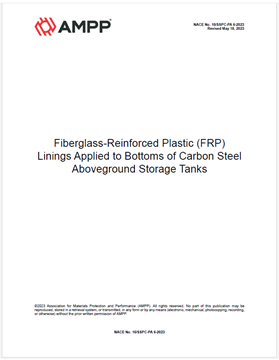Search
Oil and Gas
View as
Sort by
Display
per page
Impact Of Preservation Method, Storage Temperature, And Processing Time On Microbiological Community Shift In Solid Samples Collected From Crude Oil Transmission Pipelines
Product Number:
51322-18009-SG
Publication Date:
2022
$20.00
Importance Of Quality Control Of Wear Resistant Overlays In Oil Sands Production Operations.
Product Number:
51322-17838-SG
Publication Date:
2022
$20.00
Improving Scale Management Using ESEM Bulk Scale Analysis
Product Number:
51322-18215-SG
Publication Date:
2022
$20.00
Innovative Biocide Blend Solves Microbial Contamination Issues In Hydraulic Fracturing Applications
Product Number:
51322-18154-SG
Publication Date:
2022
$20.00
In-Situ Coating Method for Cleaning and Coating of Internally Corroded Pipelines in the Field
Product Number:
41213-751-SG
Publication Date:
2013
$20.00
Linings’ Testing for High Pressure and High Temperature Operations
Product Number:
41215-902-SG
Publication Date:
2015
$20.00
Long Term Performance Of Glassflake Reinforced Polyesters - A Case Study After 35 Years Under Offshore Conditions
Product Number:
51322-18125-SG
Publication Date:
2022
$20.00
Mechanisms And Polymorphic Transformation Of Calcium Carbonate Inorganic Scale In Oil-Water Emulsion.
Product Number:
51322-17876-SG
Publication Date:
2022
$20.00
Metallic and Ceramic Thermal Spray Coatings For Oil and Gas Production Equipment
Product Number:
1G191-1991
Publication Date:
1991
$179.00
Microbiological Profile and Risk Exposures in Topside Production Systems of FPSOs in West Africa
Product Number:
51322-18017-SG
Publication Date:
2022
$20.00
MR0176-2020, Metallic Materials for Sucker-Rod Pumps for Corrosive Oilfield Environments
Product Number:
MR0176-2020
ISBN:
1-57590-099-8
Publication Date:
2020
$109.00
NACE No. 10/SSPC-PA 6-2023, Fiberglass-Reinforced Plastic (FRP) Linings Applied to Bottoms of Carbon Steel Aboveground Storage Tanks
Product Number:
NACE No. 10-SSPC-PA 6-2023
Publication Date:
2023
$109.00












